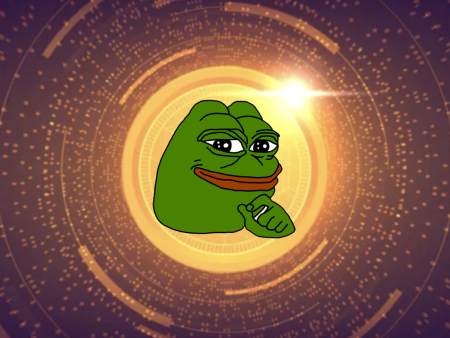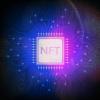Bitcoin Non-Fungible Tokens (NFTs) have quickly become the new trend in the crypto world. Also known as Ordinals, these tokens are digital collectibles that are cryptographically unique. They can be used to represent virtually anything and they offer a great way to store and trade digital assets. But their growing popularity is putting an increasing strain on the Bitcoin network. With more people buying and trading these tokens, the cost of transactions is rising, potentially causing a major disruption to the entire cryptocurrency ecosystem.

What are Bitcoin NFTs?
Bitcoin NFTs are a relatively new concept in the crypto world that has been causing a stir. In short, they allow people to inscribe data onto Bitcoin, creating something called an Ordinal. These NFTs can be minted directly onto the Bitcoin blockchain, as opposed to being created on a separate blockchain.
One of the key differences between NFTs on Ethereum and Ordinals on Bitcoin is how data is stored. NFTs on Ethereum often point to off-chain data, such as an image or video hosted on a separate server, while Ordinals are “complete” with all data inscribed directly on-chain. This makes them more secure and resistant to censorship, as the data is stored on the Bitcoin blockchain itself.
Overall, Bitcoin NFTs have the potential to be a game-changer in the world of digital assets. They provide a more secure and reliable way to create and store NFTs, while using the power and popularity of the Bitcoin network. But they also come with their own set of challenges and might have an impact on the network itself.
How do they work?
Bitcoin ordinals, also known as NFTs, operate on the principle of ordinals theory. According to this theory, satoshis or sats (the smallest unit of Bitcoin) are individually identifiable and tradable. Each sat is given a unique ordinal number based on the order in which it was mined.
These sats can then be inscribed with digital content to form a Bitcoin ordinal, which can be attached to security tokens, accounts, or stablecoins. The ordinal number serves as a stable identifier for these assets on the network, making them easy to track and verify.
While Bitcoin ordinals are usually associated with NFTs, they can be used for a wide range of other use cases. This includes tracking ownership of assets, managing digital identities, and creating decentralized finance (DeFi) solutions.
By using ordinal numbers as stable identifiers, Bitcoin ordinals offer a more efficient and secure way of managing assets. However, their use has also caused congestion on the network and led to higher gas prices. Whether they will continue to be a popular trend in the Bitcoin community remains to be seen.
How are they different from regular NFTs?
Bitcoin NFTs, or Ordinals, differ from regular NFTs in several ways. Firstly, Ordinals prioritize the privacy of the token creator by requiring a unique wallet for every release. This makes it more difficult for others to track and identify the creator of the token, providing a layer of anonymity.
Secondly, creating NFTs on the Bitcoin network is relatively easier than on an EVM-compatible blockchain. This means that users can create and sell NFTs without having to worry about the complexities of Ethereum smart contracts, which can be difficult for beginners to navigate.
Additionally, Ordinals are versatile and can easily support other types of content beyond jpeg images or short text documents. This opens up new opportunities for creators to show and sell their unique creations, whether it be music, video or even games.
Lastly, the Bitcoin network and its associated products are not influenced by the attributes of VC-backed Web3 products. Ordinals, being built on the Bitcoin blockchain, offer users a reliable and stable environment for creating and trading NFTs without having to worry about the fads and trends associated with other blockchain platforms.
Overall, the ease of use, privacy and versatility of Bitcoin NFTs make them a popular choice for creators and collectors alike. As the world of blockchain continues to evolve, Ordinals will undoubtedly play an important role in shaping the future of digital art and collectibles.
What is their impact on the Bitcoin network?
Bitcoin NFTs, or Ordinals, have had a significant impact on the Bitcoin network since their arrival. The mining of large blocks has become more common and necessary given the number of Ordinals being created and traded. Bloomberg’s report showed that transaction fees on the Bitcoin blockchain have increased since the arrival of Ordinals. Transaction fees peaked at 3.28% the day before the protocol’s launch and reached 5.68% on February 13.
A Glassnode report suggests that the number of Bitcoin wallet addresses holding assets hit an all-time high of over 44 million. This indicates a short-term increase in Bitcoin network usage due to the increasing popularity of Ordinals.
Ordinals are congesting the Bitcoin network, causing transaction fees to increase, and leading to the mining of large blocks. This has led to some concerns that the backbone of the crypto world might be at risk of breaking under the strain. Despite these concerns, it seems that nothing can slow the spread of Ordinals throughout the NFT ecosystem. We can only wait and see how the Bitcoin network reacts in the long run.
Should the Bitcoin blockchain be used exclusively for transactions?
With the rise of Bitcoin NFTs, the debate on whether the Bitcoin blockchain should be used exclusively for transactions has surfaced. Some critics argue that the Bitcoin network was never designed to handle the kind of load that comes with NFTs. And the added demand for space on the blockchain could have an unfair impact on people in developing nations who may not be able to afford high gas prices.
On the other hand, proponents of Ordinals argue that this new use of the network may just be a natural evolution. If people want to use Bitcoin to mint NFTs, why should they be restricted from doing so? And as long as there is demand for Ordinals, it’s hard to imagine people voluntarily stopping their usage.
The reality of the matter is that Ordinals are likely here to stay. Until a better way of minting NFTs arises, they are an attractive option for those in the crypto community. While this new use of the network is controversial, it may just be an inevitable change as people continue to find new uses for blockchain technology.
Of course, it’s not out of the realm of possibility that the Ordinals protocol could be rolled back. But this move would be highly controversial and complicated; it would require widespread consensus and a hard fork of the blockchain.
Ordinals may prove to be game changers
The rise of Bitcoin NFTs, or Ordinals, is taking the crypto world by storm. But what makes them so unique? The answer lies in their ability to store more data on the blockchain.
Regular NFTs are limited in the amount of data they can store on-chain. This has led to the rise of off-chain solutions, like IPFS and Arweave. But Ordinals eliminate the need for these solutions altogether.
With Ordinals, more information can be included in an NFT. This opens up a world of possibilities for creators and collectors alike.
But the true potential of Ordinals is yet to be discovered. As more people begin to experiment with these new NFTs, we may see entirely new use cases emerge.















